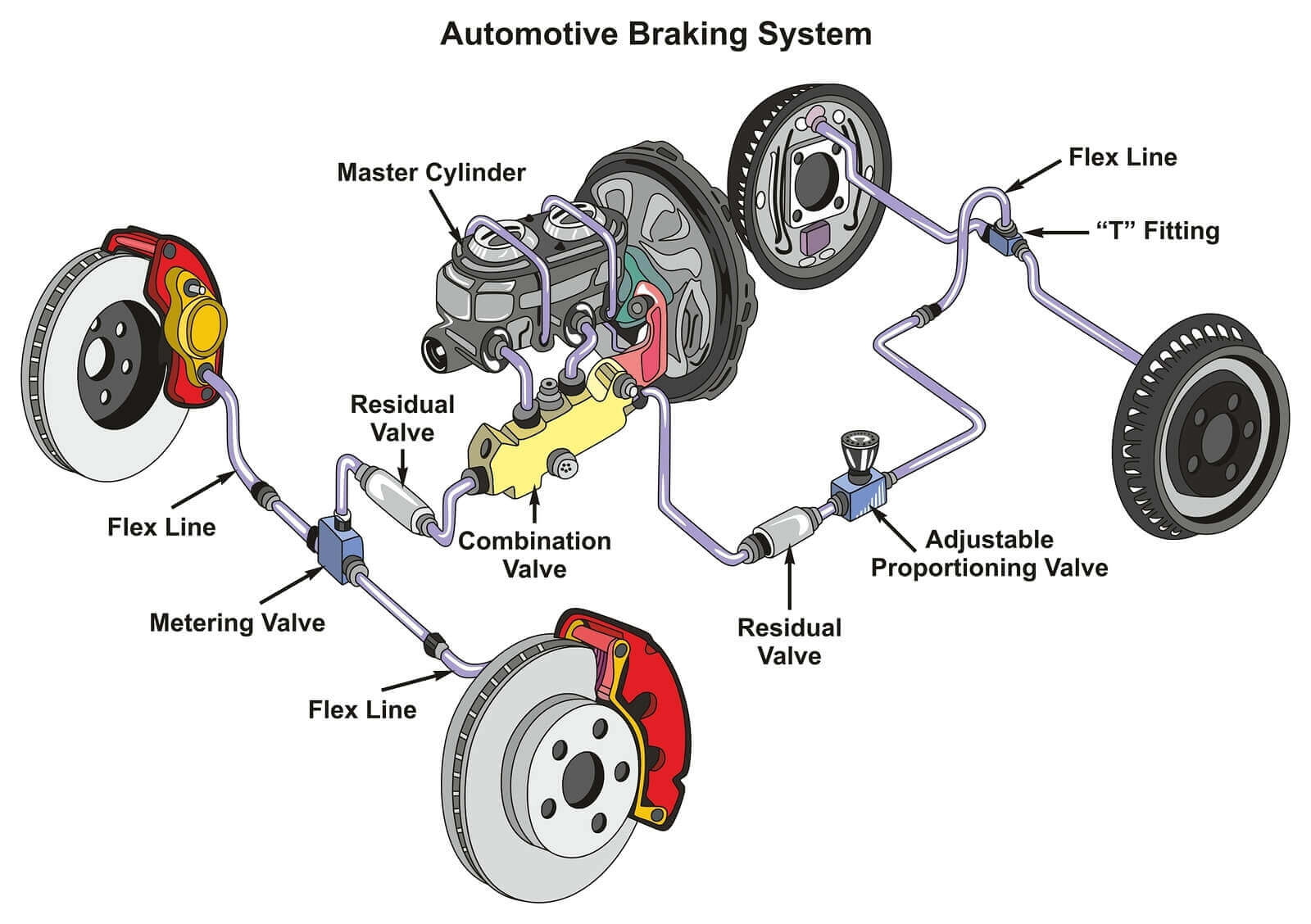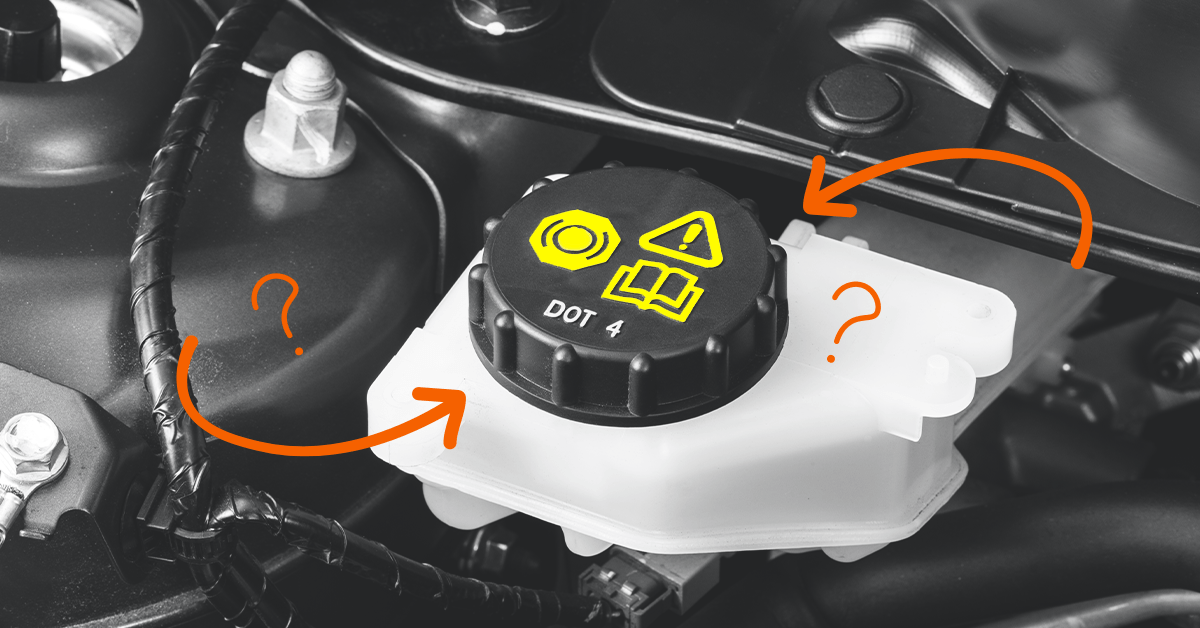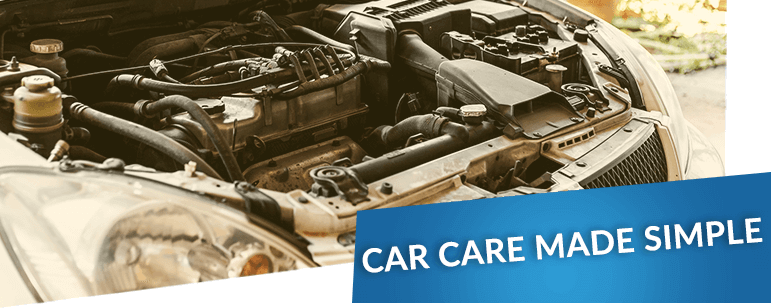Brake fluid is a hydraulic fluid used in the brake systems of many vehicles.
Without brake fluid, your car won't work - and your vehicle could experience brake failure.
Page Contents
What Is Brake Fluid?
Brake fluid is a form of hydraulic liquid used in the brake and clutch systems of lots of vehicles.
Brake fluid is usually a hygroscopic fluid, meaning it absorbs water from the humidity in the air.
This helps your brakes to perform better, as brake fluid has a high boiling point.
How Does Brake Fluid Work?
When you press on the brake pedal, the pistons in the master cylinder compress to allow brake fluid to travel under pressure.
The pressure within the brake lines increases, which is where the pressurised brake fluid is contained.
The brake lines use the pressurised brake fluid to divert the force of you pushing down on the brake pedal into the front and rear brakes of the vehicle.
The brake fluid can then convert the energy used to push down the pedal into braking pressure, causing the brake pads to squeeze on the rotors.
The rotors are then able to slow down.
What Does Brake Fluid Do?
Brake fluid serves several critical functions in your car's braking system:
- Helps your vehicle slow down and stop
- Lubricates the braking system
- Prevents rust and corrosion
- Withstands high temperatures during braking
- Absorbs moisture to help avoid brake failure
When you push the brake pedal, brake fluid is forced down to your brakes.
This, in turn, forces your brake pads onto the brake discs.
These squeeze the brakes against the wheel hubs, slowing down the spinning of the wheels.
No brake fluid = no pressure, meaning your car won’t slow down.
Your handbrake is there as an emergency resort, but it’s not strong enough to slow you down quick enough.
Braking generates an extreme amount of heat - and brake fluid is designed to work under these conditions.
Even when it is diluted by water - known as the wet boiling point - brake fluid has a boiling point of over 140°C.
In short, brake fluid is an essential part of the hydraulic brake system that helps to maintain reliable braking performance.

What Is Brake Fluid Made Of?
Brake fluid is either glycol-ether (hygroscopic) or silicone-based (hydrophobic).
Glycol-either is the standard base, while silicone brings several performance advantages.
However, silicone-based brake fluid doesn’t work well with anti-lock braking systems.
You can find your designated brake fluid type in your vehicle handbook.
It will be indicated by one of four ‘DOT’ numbers.
DOT – also known as Department of Transport – is a brake fluid categorisation system originally designed in America.
It is now standard across much of Europe and the UK, and helps drivers to identify which fluid type they need.
What Brake Fluid Do I Need?
There are several types of brake fluid, the most common being glycol-based (DOT 3, DOT 4 and DOT 5.1) and silicone-based (DOT 5).
You must use the recommended type for your vehicle, as the different standards are not compatible.
Whilst you could use a different type of glycol-ether fluid in an emergency, you cannot use silicone-based brake fluid in a car that is not designed for it, and vice versa.
You can refer to your vehicle handbook or check the cap of the brake fluid reservoir to find out which brake fluid to use.
Please note that dry boiling point refers to the minimum temperature needed to change brake fluid’s state of matter from a liquid to a gas with no water present.
Wet boiling point refers to the minimum temperature needed to change brake fluid’s state of matter from a liquid to a gas with 3.7% or more water present in the fluid.
Brake fluid is described as wet when there is 3.7% or more water content in it.
DOT 3
Boiling Point (Dry) = 205°C
Boiling Point (Wet) = 140°C
This type has the lowest dry and wet boiling point and is designed for everyday use.
It is mainly found in mass-produced cars with small to medium-sized engines.
DOT 4
Boiling Point (Dry) = 205°C
Boiling Point (Wet) = 140°C
DOT 4 is the most common type of brake fluid and is most suited to vehicles with larger engines.
It is like DOT 3 but includes additives that increase the minimum dry and wet boiling points.
This means you will need to book brake fluid changes more frequently.
DOT 5
Boiling Point (Dry) = 260°C
Boiling Point (Wet) = 180°C
DOT 5 is the only silicone-based brake fluid, and it is not compatible with any car designed to run on DOT 3,4 or 5.1.
It is also extremely expensive due to its performance benefits.
It is not suitable for vehicles that will be driven at high speeds or under racing conditions, but it is recommended for many classic cars.
DOT 5.1
Boiling Point (Dry) = 260°C
Boiling Point (Wet) = 180°C
DOT 5.1 gives the same performance benefits as silicone-based brake fluids, but it is a glycol-ether based fluid.
This makes it compatible with modern cars that use anti-lock brakes.
It is chemically similar to both DOT 3 and DOT 4.
It is designed for cars with larger engines and has the joint highest dry and wet boiling point along with DOT 5.
You can buy brake fluid at many automotive shops, supermarkets, petrol stations and online.
If your brakes are feeling spongy or you have noticed your car's brake fluid getting darker, then you should think about booking a professional brake fluid replacement soon.






